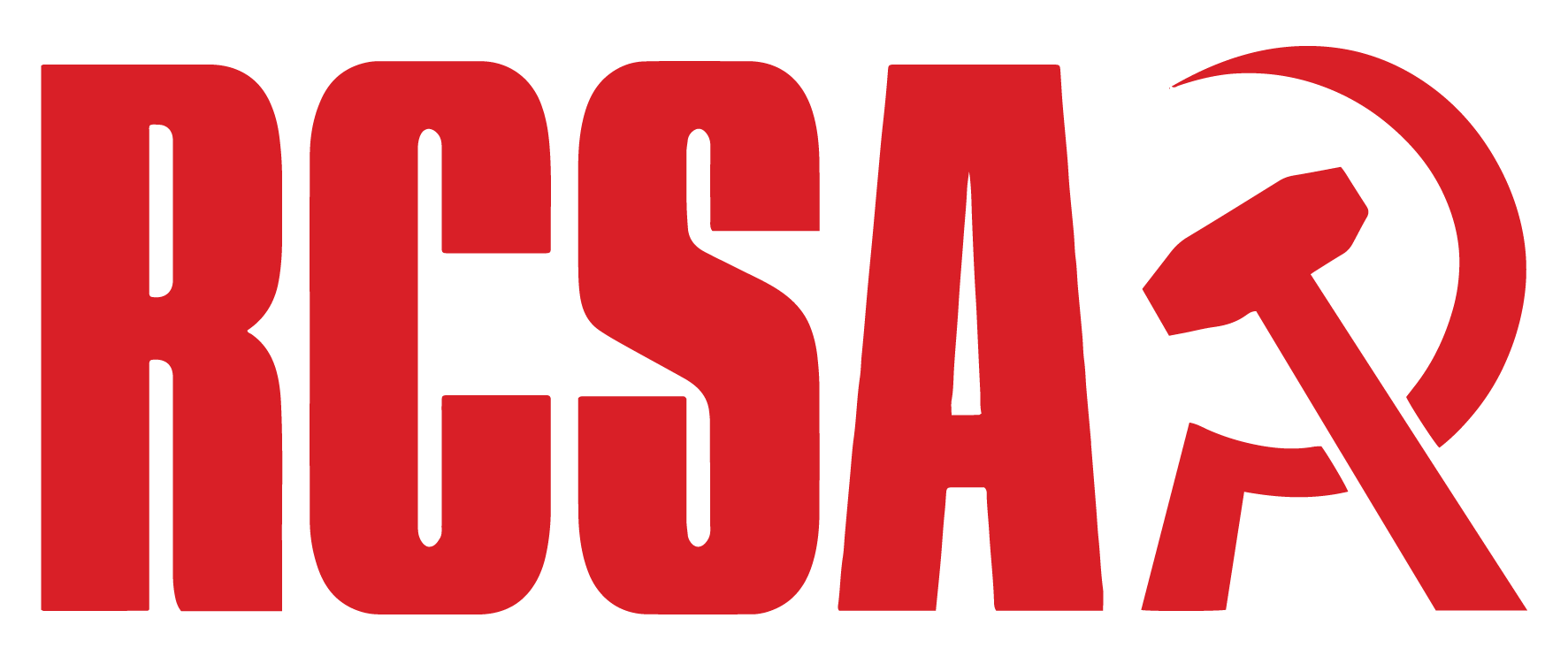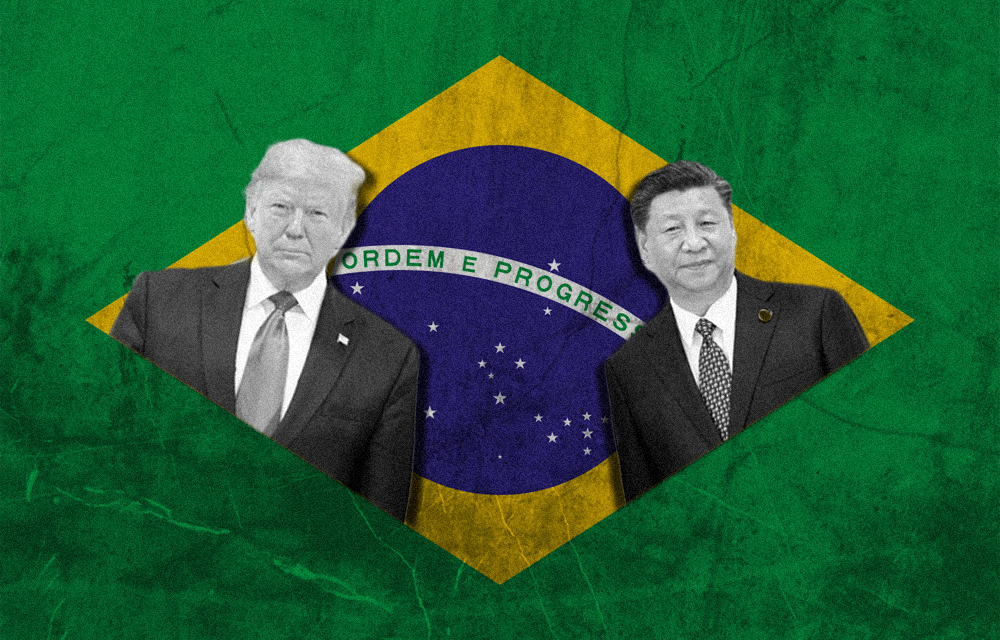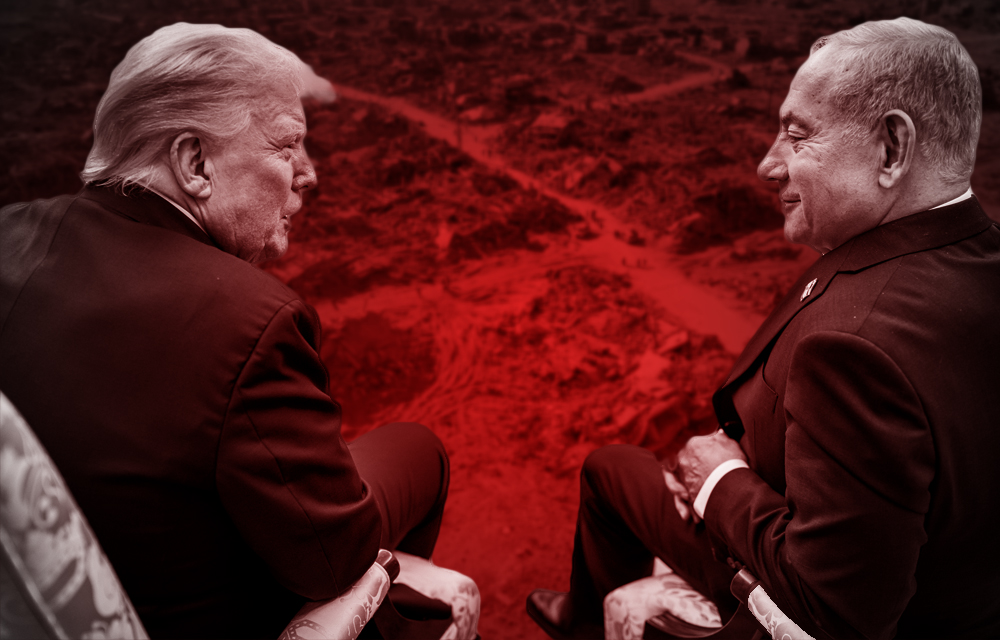[Originally published on marxist.com]
Jorge Martín
29 September 2025
What started as a day of peaceful protest called by the Madagascan youth on Thursday 25 September, ended with brutal repression, which left several youth killed by police, clashes and rioting. The government has declared a curfew in all major cities, but protests continue.
The ‘leo délestage’ (‘fed up with electricity cut-offs’) movement started with a call from a number of social media influencers to protest against continuous water and electricity cut-offs. Organisers gathered around the ‘Gen Z Madagascar’ Facebook page and adopted the pirate flag of the One Piece comic, which has become the symbol of the international rebellion of the youth.
The fact that the first humans to populate Madagascar came from the Indonesian archipelago, and the strong cultural and linguistic ties with that country, has made the inspiring impact of the Indonesian mass movement much bigger.
As in Indonesia, Nepal, the Philippines, East Timor, etc. a common theme of this movement is rejection of all politicians and established institutions, hatred of corruption, and rejection of the gulf between those at the top (who flaunt their wealth) and the overwhelming majority of the population who live under the poverty line (79 percent in the case of Madagascar, according to the World Bank) – as well as a generation of youth which feels, quite rightly, that they have no future.
Many of those joining the protest were university students. Their calls and banners featured slogans like ‘We are poor, angry and unhappy’ and ‘Madagascar is ours’, together with ‘Mitsangana ny tanora’ – ‘youth rise up!’ Some were wearing the coloured straw hats associated with the One Piece flag that have become a symbol of defiance.
Police brutality
The organisers had insisted that the demonstrations would be peaceful, but the prefecture had other ideas. Protests were banned, and those who gathered were met by riot police. Protesters fought back in defence of their democratic right to demonstrate. They set up burning barricades and protected themselves by any means available.
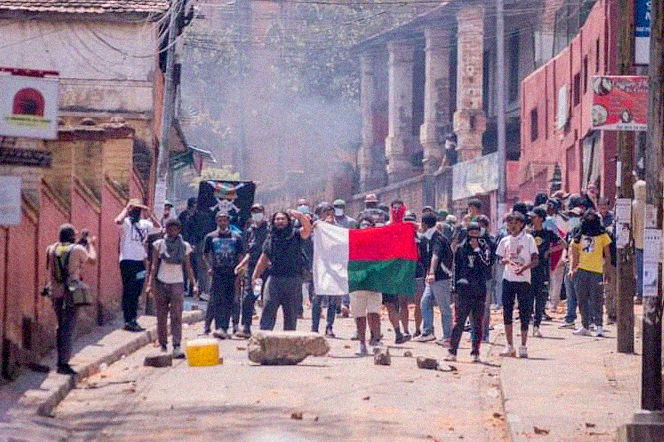
There are videos circulating of police officers riding around in pickup trucks, shooting at protesters. World media is reporting five protesters killed, all of them in the capital Antananarivo, but that is clearly an underestimate.
Local papers report a total of six university students killed by police repression, including one in the northern port city of Antsiranana on Friday. University students explained:
“We have no weapons and stayed on campus on Thursday, September 25, but they came here to attack us. Our comrade had nothing in his hands. He was in the street, yet he was shot. This act is reprehensible. Out of respect for our friend, we will not give in. The struggle continues until justice is served.” (Midi Madagasikara, 27 September)
Students marched through the streets carrying the dead body of their comrade. As captured here.
By the end of the night of 25 September, several buildings had been set on fire and the houses of three pro-government parliamentarians had been torched.
By then, the protests had spread from the capital Antananarivo to all major cities: Antsiranana, Majunga, Toliara and Antsirabe. All of them were put under a dusk-til-dawn curfew.
On Friday morning, the government of President Rajoelina, a businessman and media magnate, was in panic mode, trying to control the situation with a mix of repression and concessions. While denouncing the protests as “an attempted coup d’état”, he also sacked the Electricity Minister.
Ironically, Rajoelina was propelled to power after mass protests in 2009 against the previous president, in which corruption played a big part. Sixteen years later, nothing fundamental has changed. If anything, the situation has gotten worse for the Malagasy masses.
Rajoelina’s tactics didn’t stop further protests from taking place on Friday and Saturday, 27 September, with the youth back on the streets.
On Sunday evening, 28 September, the movement issued a statement demanding: an immediate public apology and explanation on the part of the government for the brutal repression on September 25; the resignation of the government of Prime Minister Ntsay Christian within 72 hours and the resignation of the prefect of the capital Antananarivo within 24 hours, for their violation of democratic rights; as well as a guarantee of the freedom to protest and the release of all those detained during the protests. The statement also demands that any talks with the movement should take place in an open space and not in government buildings.
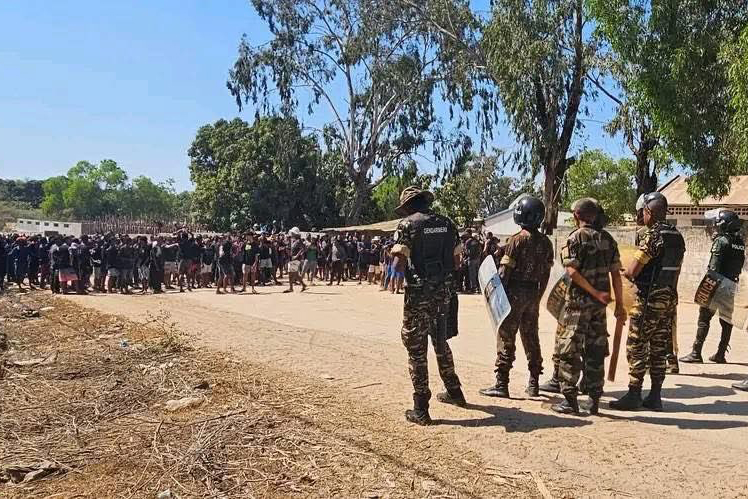
The statement shows the determination of the youth to continue with the protest movement, despite repression, and is a clear challenge to the government. However, in its final point, the confused character of the protest movement is shown, when it appeals to “ALL ACTIVE FORCES in the land of the Republic of Madagascar, associations, civil society, the private sector, influencers, religious leaders, unions, civil servants, POLITICIANS, elected officials, appointed officials and every citizen to join us, for all these legitimate demands.”
How can an appeal be made to the workers’ trade unions and “the private sector” (businessmen) at the same time? The former are suffering from poverty and lack of access to basic services, while the latter exploit working people and benefit from their poverty. Their interests are not the same, and so they cannot be brought together.
As for the religious leaders, the heads of the Council of Christian Churches (FFKM) made an appeal on 26 September in which they called for dialogue and opposed the violence… of the protesters (!!) without any mention of police repression. The tops of the churches have shown in practice which side they are on.
On the other hand, the health service unions have already issued a threat to strike within 48 hours if their demands are not met. Madagascar has a long and proud tradition of working-class organisation among teachers, health workers, the dockers, and at the electricity company, which is at the centre of the protests, etc.
The Malagasy youth should trust only their own forces and those of their allies. They should set up rank-and-file committees to organise their movement, reach out to the workers, peasants and poor masses who sympathise with them, and organise self-defence against police brutality.
On Monday, 29 September, the country’s student unions issued a joint appeal for a nationwide student strike and demonstrations at 9 am, with a call for students to wear black in mourning for the martyrs of the movement. Thousands gathered outside the university buildings in all major cities, singing the national anthem and carrying the national flag. But, as soon as they started marching, they were met again by riot police and tear gassed.
Legacy of imperialism
Electricity cut-offs, sometimes lasting for over 12 hours, are the spark which has led to these protests. The problems affecting Jirama (the country’s state-owned electricity and water supply company) are certainly aggravated by corruption, with politicians and managers regularly syphoning off money into their own pockets. However, this is just a symptom of the general crisis of capitalism in Madagascar, a country dominated by foreign imperialism and subjugated by IMF and World Bank loans for decades.
The current impoverished state of the economy can be traced back to French colonialism, which used forced labour and practised a cruel policy of divide and rule between the different ethnic groups on the island. This led to the Malagasy Uprising of 1947 against French domination, which was brutally suppressed by a French government presided over by a Socialist and which counted on the participation of the Communist Party. The French were brutal and vindictive, using mass arrests and executions, rape and torture as weapons of war, razing whole villages and throwing rebels out of planes.
The rebels had been led to believe that they would be supported by the British and the US, but no help was forthcoming. While the imperialist powers were in competition for the domination of the colonies, the last thing they wanted was a victorious uprising, which would have encouraged the colonial peoples elsewhere. The rebellion was put down in blood, with tens of thousands of Malagasy killed. The French colonial authorities at the time put the figure of Malagasy victims of the clampdown at 89,000, which was probably an underestimate.
The brutal tactics used and perfected by the French in Madagascar were later used as a model during the repression of the Algerian war of liberation a decade later.
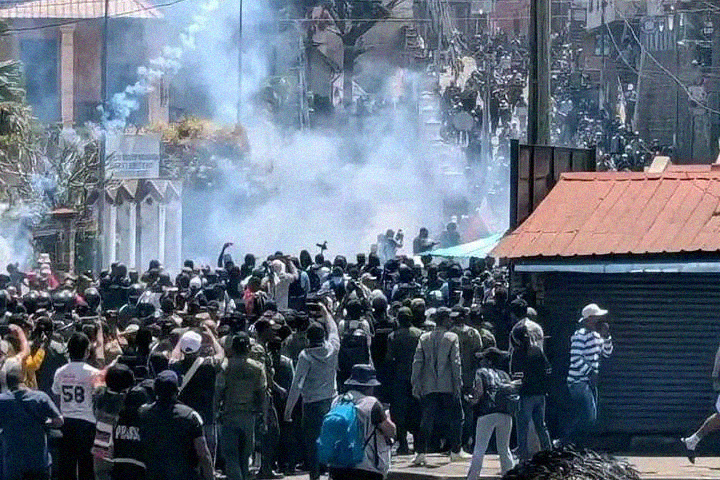
Finally, in 1960, the island was granted independence, but remained under the control of French imperialist capital. Half of the island’s exports and half of its imports were with the former colonial metropolis. Whatever finance capital and banking there was, was controlled by French capitalists.
There were strong communist and socialist traditions among the working class and in the nationalist movement. For a short period of time in the late 1970s, there was a regime which moved towards breaking away from French domination, nationalised key sectors of the economy and looked towards aligning with the Soviet Union. However, this was short-lived and the same regime went back, cap in hand, to the IMF in the early 1980s, which forced a programme of ‘structural adjustment’ and started a process of privatisation which was mired with corruption.
The population of Madagascar is poor despite the fact that the island is rich in natural resources and fertile land. The country represents 80 percent of the world’s vanilla production and has rich nickel, titanium and other metal reserves. However, its economy is dominated by the world market and big multinationals. France is still dominant in terms of its exports, with the United States coming close behind. In recent years, there has been a marked increase in the presence of Chinese capital and investment in the island, with the Asian economic power becoming the island’s main source of imports.
The economic problems of poverty and collapsing infrastructure, from which the overwhelming majority of the Malagasy population suffer, go beyond the question of corruption, which is just the outward manifestation of the rotten character of capitalism in Madagascar, dominated by foreign imperialist powers.
The struggle against corruption, for access to water and electricity, for healthcare and education, is closely linked to the struggle against foreign debt and, therefore, the struggle against capitalism and imperialism.
The Malagasy youth have shown their courage and bravery. Their struggle can only be completed as part of a struggle against the capitalist system itself. Otherwise, we will witness yet another cycle of mobilisation and mass action, which ends up simply in a change of government, while the system remains.
Victory to the Malagasy uprising. Down with capitalism. Down with imperialism. Youth rise up!
